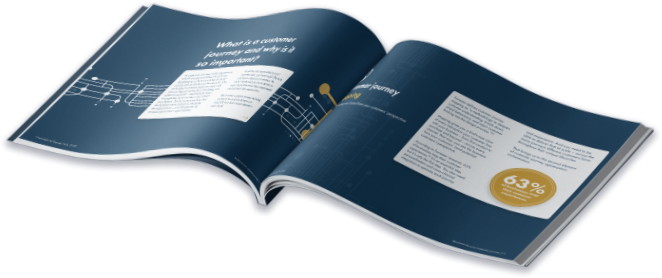Next Best Experience (NBX) is the holy grail of customer analytics. Forrester defines NBX as “the ability to identify and deliver the right experience to the right customer in real-time based on everything you know about the customer”.
Next Best Experience enables you to make recommendations based on signals from customer data, but it also analyses signals from across the customer journey, independent of the business domain. Therefore, Next Best Experience can manifest in many ways – from customer service and customer engagement to operations, finance, sales or marketing. In fact, the NBX recommendation may be to take no action at a particular moment if it’s in the best interest of the long-term relationship.
In this blog, we look at what NBX looks like in practise and how it helps organisations meet ever-evolving demands for hyper-personalised experiences – efficiently, cost-effectively and at scale.
Step 1: Formulate your strategy
Delivering the Next Best Experience to each customer begins with a planning process. Start by considering what customers need to know as they progress towards a goal. For example, are people looking for specific items, chasing for delivery updates or seeking an answer about an existing order? Focus on one or two goals to begin with, looking at what will add the most value. It’s not about re-imagining every touchpoint and interaction. Rather, it’s about acting tactically and in an iterative manner.
Then, for each goal, map out the customisation opportunities, marketing channels, messages and touchpoints along the journey.
Step 2: Automate processes
The next step is to build out the automated processes that support your strategy. Real-time interaction management (RTIM) and customer journey automation technology will help you sync channels, push and pull customer data, make decisions and then deliver communications.
To get the quickest value, focus on ensuring data flows across channels and on eliminating drop-off points in the journeys. Building processes that incorporate the customer’s context will strengthen the experience and allow for hyper-personalisation. Remember, Next Best Experience allows you to hyper-personalise for each individual, not just the average customer profile. By connecting all of your data and channels, you can ensure consumers don’t repeat experiences unnecessarily – and that they’re not shown irrelevant information.
Step 3: Use predictive analytics
Your strategy and process design should be rooted in evidence. Longitudinal, behavioural, intent and satisfaction data from across all journeys are the most useful when starting out. Anything that tells you about customers across time will have more value than data reflecting a single moment. Then, you can create a 4D picture of how customers move through their interactions with your business.
When it comes to ongoing measurement and optimisation, stakeholders traditionally have their own “favourite” metrics. It might be customer churn, lookalike audiences or behavioural segmentation. However, you’re best off selecting an overarching metric that everyone can align with, such as customer lifetime value. When you design Next Best Experiences based on outcomes, you may find that behaviour scoring low on one “traditional” metric (like high inbound call volumes) may actually have an overall positive impact on customer lifetime value.
Using predictive analytics, you can then tailor Next Best Experiences based on what will drive the most actual value for the business.
Now is the time to exceed customer expectations
With Next Best Experience, you can use automation to transcend siloed operations and departmental KPIs. Therefore, you meet ever-evolving demands for hyper-personalised experiences – efficiently, cost-effectively and at scale.
—
To learn more on how automation can benefit you and your business, download our recent whitepaper. Interested in finding out how Engage Hub can help you fulfil your customer experience requirements? Get in touch today.
